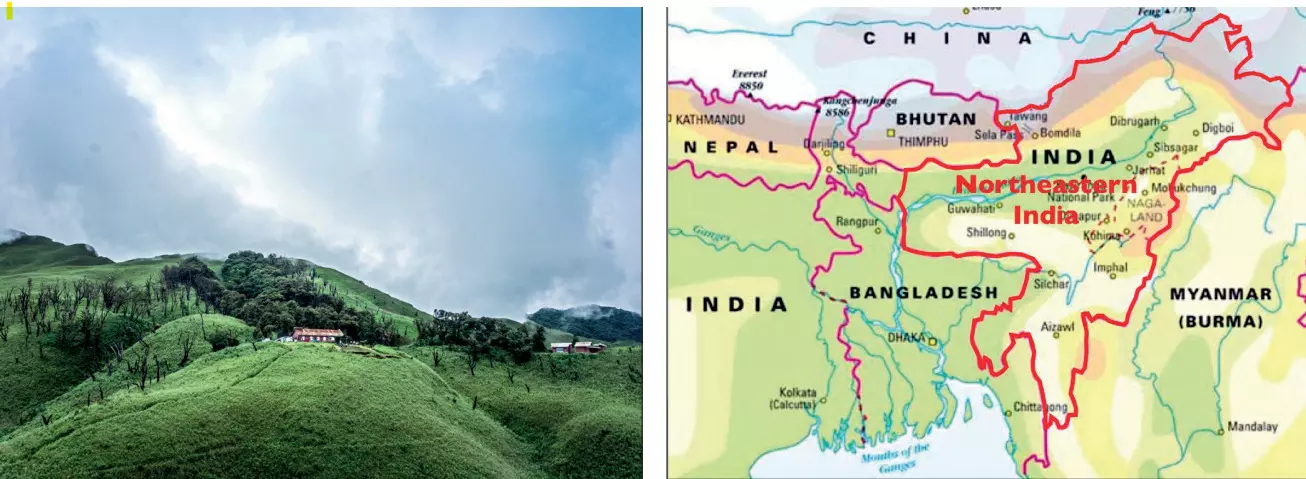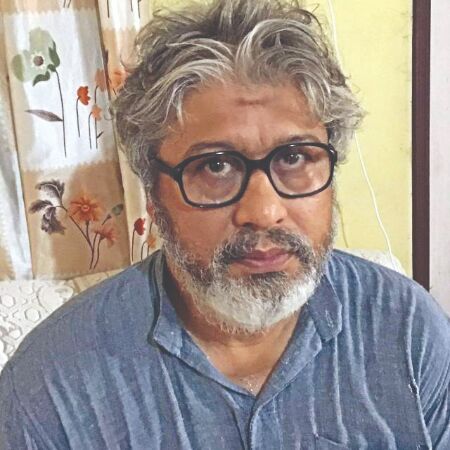Geopolitical Quicksand
Amidst India-Pak tensions, China’s provocations in Arunachal Pradesh, Bangladesh’s political upheaval, and Myanmar’s instability have converged to create a high-stakes strategic vulnerability along the eastern front

Since May 7, when India and Pakistan were engaged in a limited war along India’s western front, a few disturbing developments in the eastern border of India have been reported. Beijing released the fifth list renaming 27 locations in Arunachal Pradesh—an Indian state which China claims as “South Tibet”. While symbolic, these moves are strategic provocations aimed at challenging India’s sovereignty. China claims some 90,000 sq km of Arunachal Pradesh as its territory. It calls the area “Zangnan” in the Chinese language. On May 14, India rejected the new Chinese names for places in Arunachal Pradesh as a “preposterous” attempt to alter the “undeniable” reality that the state “was, is, and will” always be an integral part of India. Significantly, China is constructing the world’s biggest dam on Brahmaputra river, known as the Yarlung Tsangpo in Tibet, before it enters Arunachal Pradesh. This super dam can invite a mega-disaster for India.
The interim government of Bangladesh, led by Mohammed Yunus, took out a gazette notification on May 12 banning the Awami League—India’s most trusted ally—that governed Bangladesh uninterruptedly for nearly 15 years from 2009 till August 5, 2024 when Prime Minister Sheikh Hasina was overthrown in a student-people uprising. The decision to ban Awami League, whose leader Sheikh Hasina has taken shelter in India since she was deported in August, was taken on a day (May 10) when Pakistan reportedly named its military response to India “Operation Bunyan-ul-Marsoos”, a term drawn from the Quran meaning “solid wall of lead.” The International Monetary Fund (IMF) has announced to release USD 1.3 billion to Bangladesh in June. Prior to this announcement, during the on-going Indo-Pak war, IMF bailed out Pakistan with USD 2.4 billion despite strong objection from India.
Bangladesh’s Chief Advisor Muhammad Yunus, during a meeting with the Deputy Speaker of Nepal’s House of Representatives, proposed a comprehensive economic integration plan encompassing Bangladesh, Nepal, Bhutan, and the seven north-eastern states of India. Bangladesh shares 4,097 km of land boundary with India.
North East News reported that Bangladesh is procuring Turkish and Chinese weapons to modernise its army. On May 13, four executives from China Vanguard Co Ltd met senior Bangladesh Army Ordnance Division officers at a Battalion Operation Centre in Dhaka to discuss plans to acquire HQ-17AE surface-to-air missiles (SAMs), JSG radars and FK-3 medium-range-surface-to-air missiles (MSAMs). The Turkish Roketsan TRG-230 and TRG-300 were acquired late last year when 18 units were procured, representing a significant enhancement to Bangladesh’s artillery capabilities.
In another major development, the US administration, armed with the BURMA Act of 2022—a US law aimed at supporting democracy and human rights in Myanmar (Burma)—is putting pressure on Yunus administration to provide a “humanitarian corridor” to Myanmar’s Rakhine state. This initiative holds security implications for India’s remote northeast. The rebel Arakan Army (AA), controls most of Rakhine state, including the entire 271-kilometer border with Bangladesh. The latest wave of Rohingya refugees are fleeing not from Myanmar’s military but from the anti-junta AA rebels, whose savage attacks have forced Rohingya militias to now work with their former oppressors, the country’s armed forces. This weakens Bangladesh’s claim that the corridor is for humanitarian aid, as any aid will be controlled by the anti-Rohingya AA. On the issue of the humanitarian corridor, Bangladesh Nationalist Party’s (BNP) Standing Committee Member Amir Khasru Mahmud Chowdhury said, “a geopolitical conspiracy is being hatched around Bangladesh. Are they trying to turn Bangladesh into another Gaza? Are they pushing Bangladesh into a war zone?” he asked. Meanwhile, it is alleged, by the national and international media, that on the evening of May 6, 38 Rohingya refugees from Delhi’s Uttam Nagar, were detained. After being flown to Port Blair, the group of Rohingya refugees were transferred onto an Indian naval vessel on May 8, before being thrown into the open sea. Thomas Andrews, UN Special Rapporteur on the situation of human rights in Myanmar, has launched an inquiry into the incident.
Senior General Min Aung Hlaing, the leader of Myanmar’s military junta, met with Chinese President Xi Jinping in Russia. China’s engagement in Myanmar reflects a nuanced strategy; while it officially backs the military regime, it also supports various ethnic armed organisations (EAOs) opposing the junta. On May 14, ten armed cadres belonging to the armed wing of the National Unity Government (NUG)—a government-in-exile—were killed by the Assam Rifles near the border with Myanmar in Manipur, after they tried to disturb the ongoing work to fence the Indo-Myanmar border. Kukis, Nagas, and Mizos are also opposed to the fencing, saying this would further divide the ethnic communities living on either side of the border. The prolonged civil war in Myanmar will hinder the revival of India’s alternative route to the Northeast, avoiding the Siliguri Corridor, after the completion of the Kaladan Multi-Modal Transit Transport Project (KMTTP)—a joint initiative between India and Myanmar that connects the Kolkata seaport to the Sittwe port on the Kaladan River in Rakhine State. The Sittwe port connects to Paletwa in Myanmar through an inland waterway, and to Zorinpui in Mizoram through a road section. KMTTP has “almost died” after the rebel Arakan Army (AA) captured the Paletwa township near the Mizoram border in January 2022. The AA’s grip on the region is now almost total.
Last week, India’s Directorate General of Foreign Trade (DGFT) stopped readymade garment exports from Bangladesh to India through all Indian land ports, while also barring northeastern Indian land ports from being accessed by Bangladesh for the export of specified products. The step was taken as a reciprocal measure after Bangladesh introduced a ban on Indian yarn exports through its land ports and resorted to aggressive inspections of Indian trucks. India has restricted imports worth USD 770 million from Bangladesh through land ports, affecting nearly 42 per cent of bilateral trade. This has disrupted the supply chain of Bangladeshi exports and severely affected the border economy of both countries. In this Indo-Bangladesh trade conflict, China is the net gainer. However, Bangladesh has expressed its intention to address and resolve all trade-related issues with India.
For northeastern India, the restoration of pre-independence connectivity with the rest of the country is crucial for economic development. This is because, after the partition of Bengal in 1947, the region became landlocked with limited access to the mainland through the Siliguri Corridor. For the benefit of both India and Bangladesh, a Comprehensive Economic Partnership Agreement (CEPA), as initiated by both governments in 2021, may be revived with utmost seriousness. It’s a win-win strategy for both countries.
The writer is a professor of Business Administration who primarily writes on political economy, global trade, and sustainable development. Views expressed are personal



